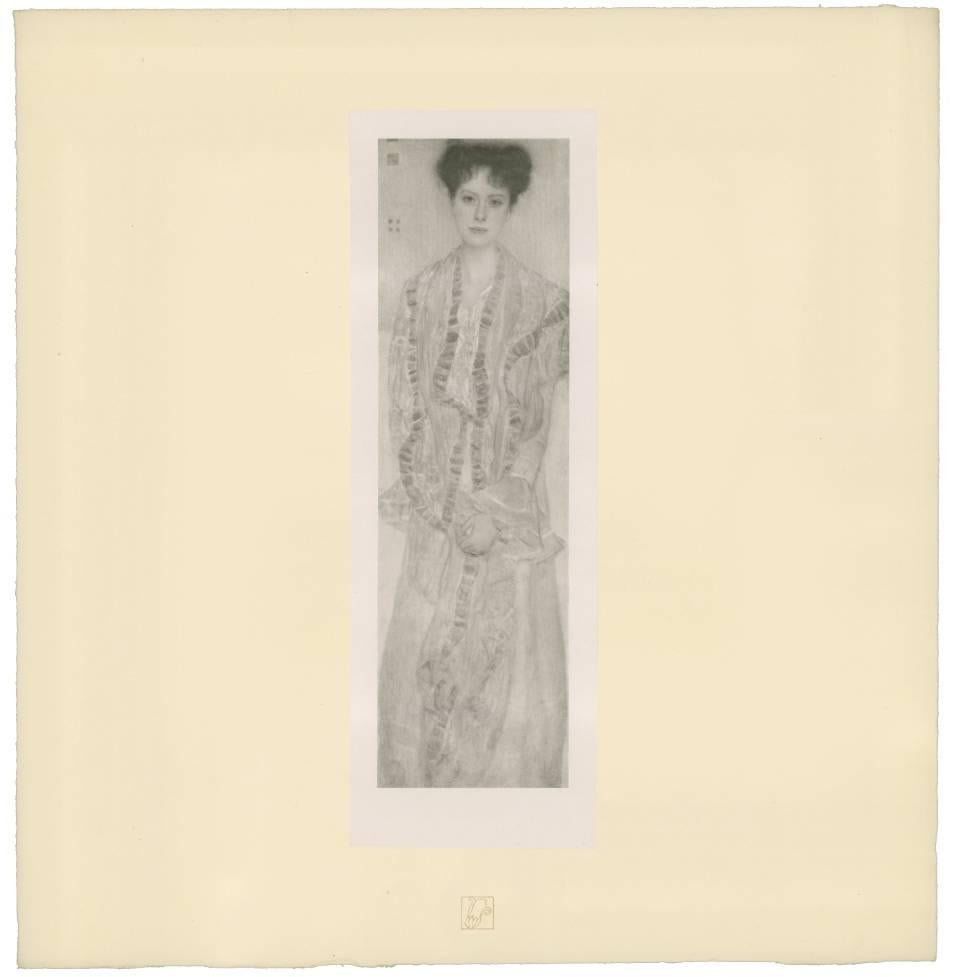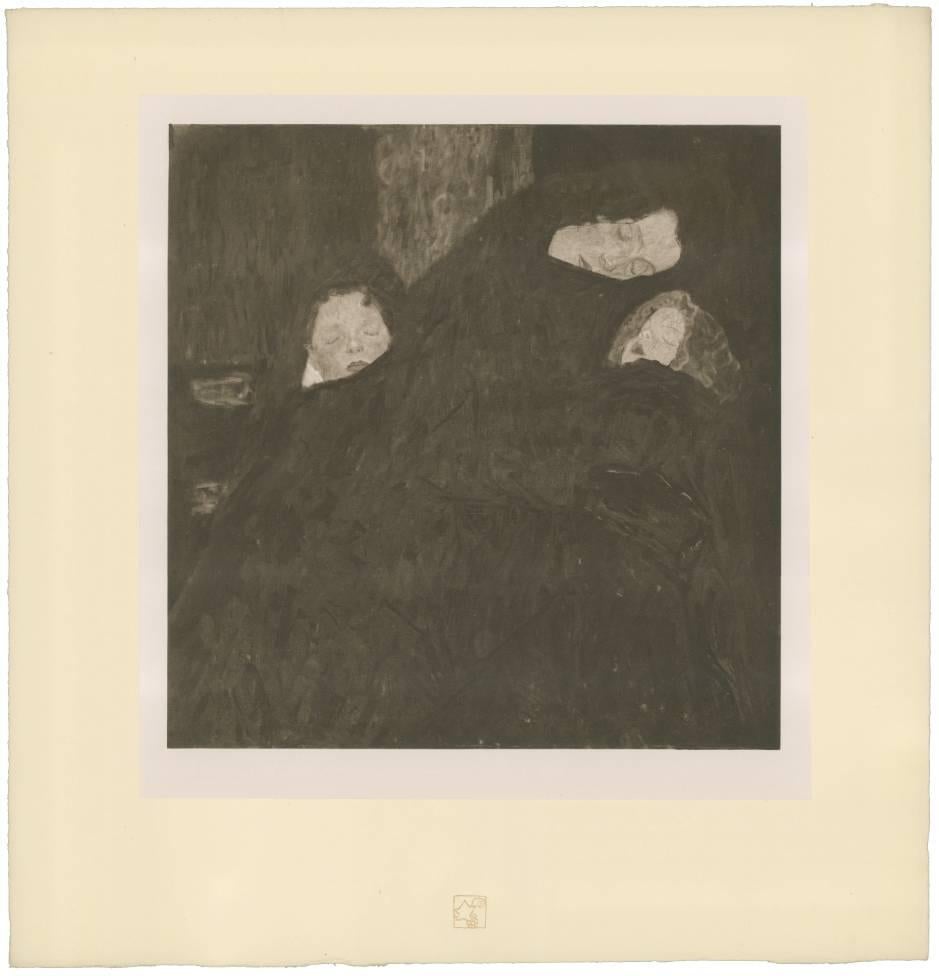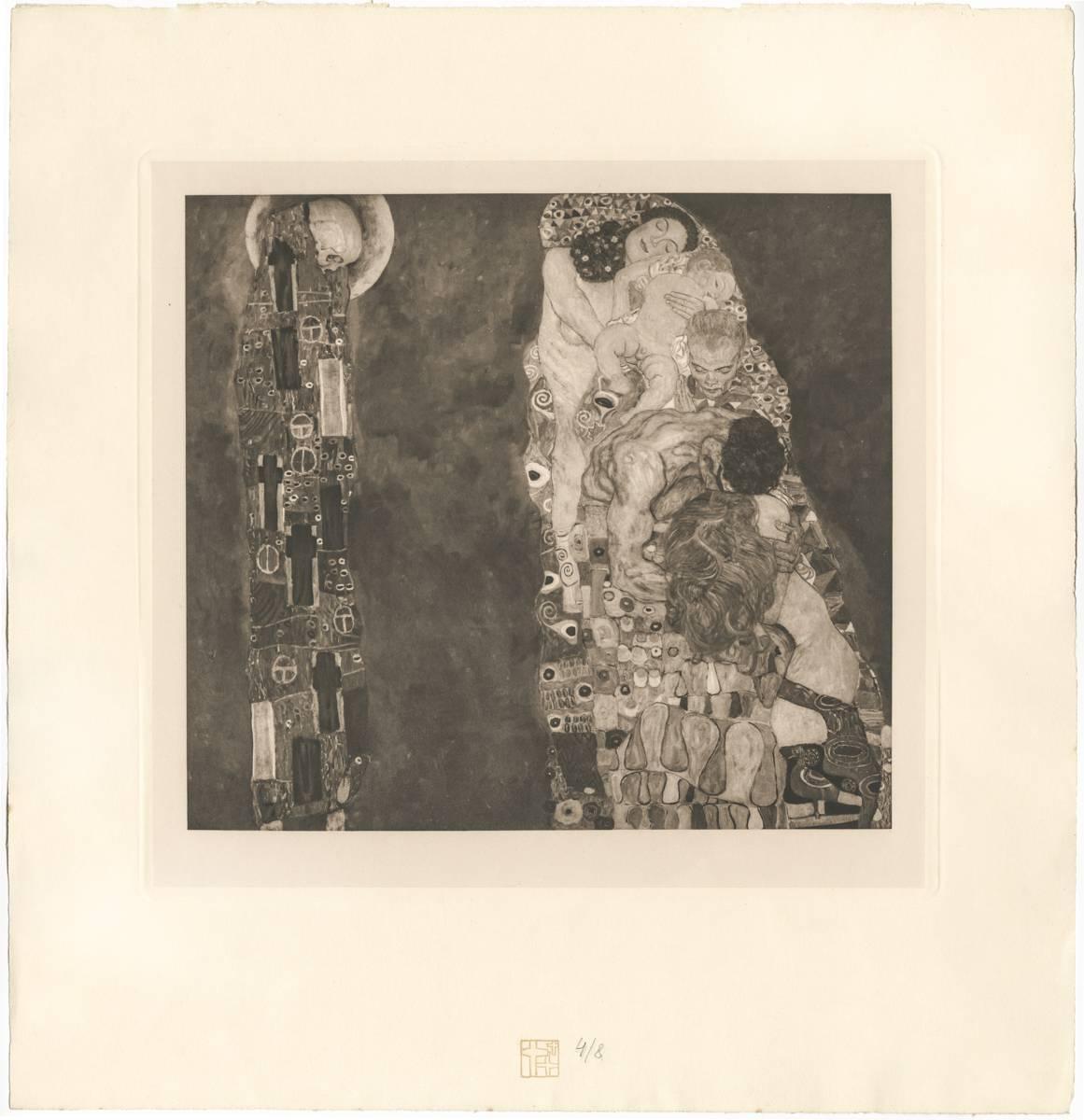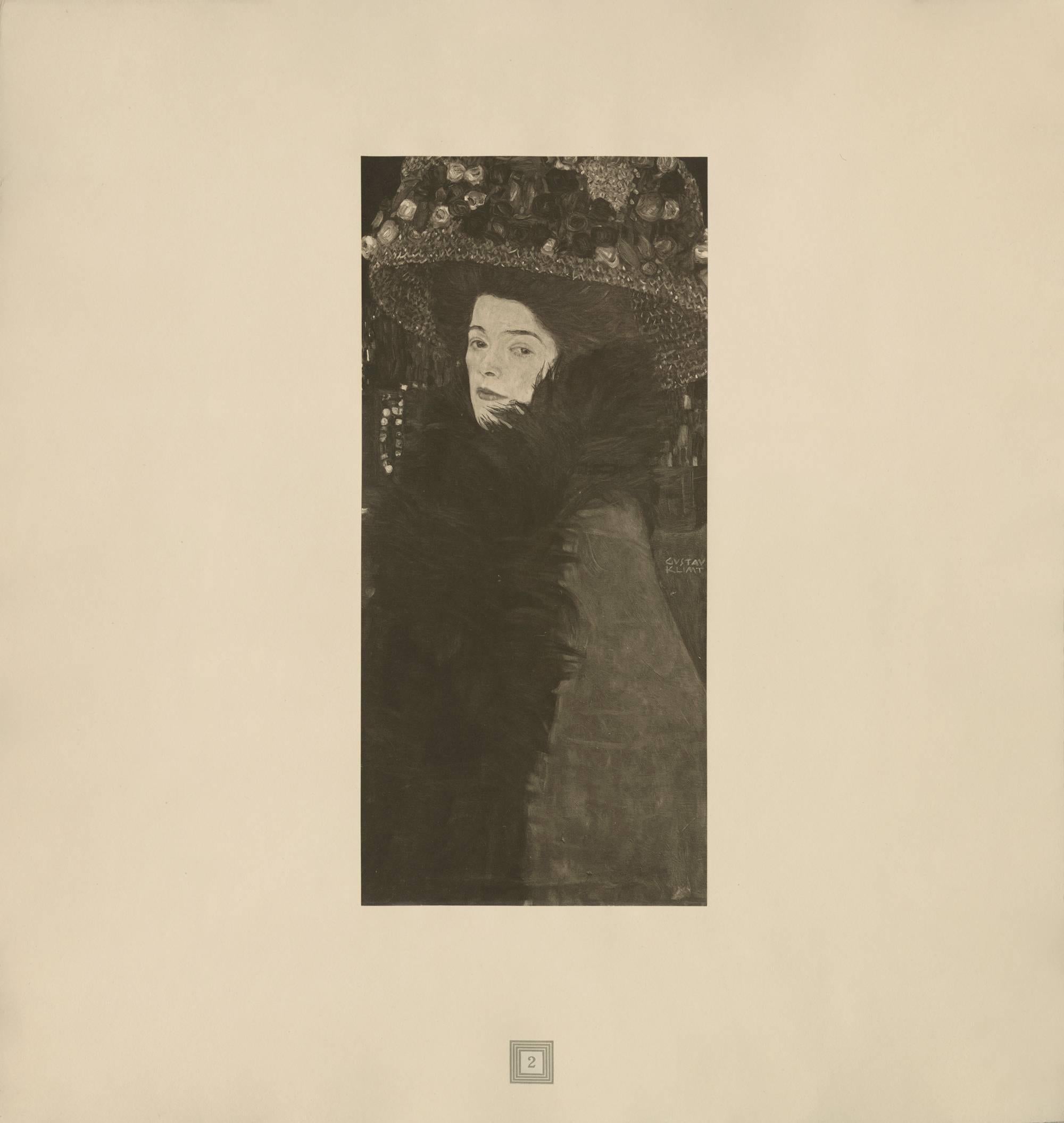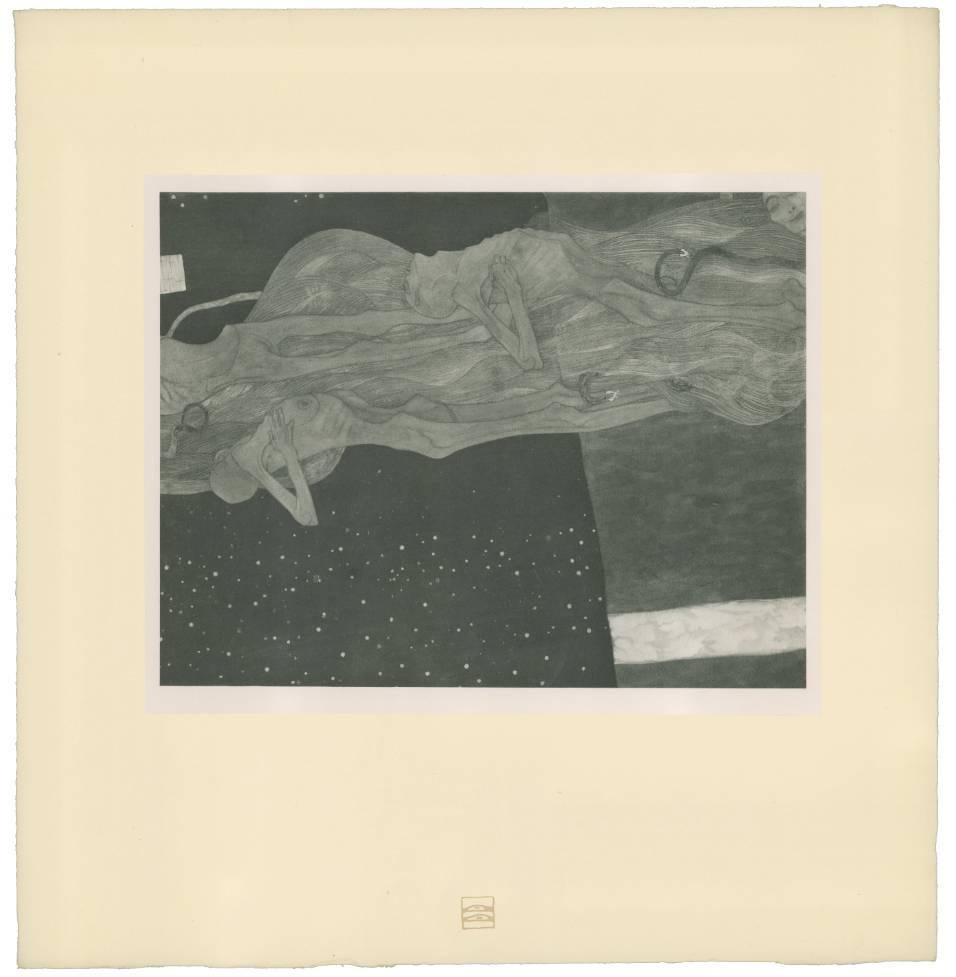Items Similar to E. Strache, Handzeichnungen folio, "Female Nude, Walking" Collotype plate
Want more images or videos?
Request additional images or videos from the seller
1 of 6
(after) Egon SchieleE. Strache, Handzeichnungen folio, "Female Nude, Walking" Collotype plate1920
1920
About the Item
after Egon Schiele (1890 – 1918), AUSTRIA
“ART CANNOT BE MODERN, ART IS PRIMORDIALLY ETERNAL.” -SCHIELE
Defiantly iconoclastic in life and art, Egon Schiele is esteemed for his masterful draftsmanship and precocious insight into the human condition. Part of the first wave of Austrian Modernism, he was swept away by the Viennese fascination with the tension between Life and Death (known in the works of Freud and his later interpreters as Eros and Thanatos). Life, identified with attraction, love, sexuality, and reproduction, and Death, represented by distortion, disease, repulsion, and hysteria, often appeared in the same composition, thereby suggesting the frightening life cycle of the human mind and body.
Young throughout his career, Schiele universalized his childhood traumas, thriving libido, insecurities, fears, and longings. His contorted line, jarring contrasts, and flat areas of color, demonstrate an early alliance with Expressionist philosophy and artists who were relentlessly frustrated by conventionality in all its forms. Schiele’s work embodied man’s disorientation and confusion in a seemingly absurd world, a world plagued by disease and war. It continues to be astonishingly relevant today, not just because it helped define Modernism but also because it revealed the dark and immutable aspects of the human condition.
Handzeichnungen, is a fine art portfolio consisting of 15 collotype prints after original watercolors and drawings by Egon Schiele, four of which are in color. Published by Verlag Eduard Strache, Vienna, Prague, Leipzig, 1920, in an edition of 510: the first group numbered I - X were hand signed by Schiele and included an original drawing by Schiele. The art images were printed by Kunstanstalt Max Jaffe, Vienna; the portfolio with printed written pages was printed by Gesellschaft fur Graphische Industrie, Wien VI.
Although Egon Schiele’s Handzeichnungen portfolio was published posthumously in 1920, there is evidence that on the heels of his highly successful sold-out run number-ing 400 copies with his 1917 portfolio of monochromatic prints entitled Zeichnungen, Schiele was already planning a bigger and more elaborate follow-up upon his untimely death in 1918. The final print in Handzeichnungen features a stunning color print of a Kneeling Female (semi-nude) from the collection of Kunsthandlung Richard Lanyi. This same image was the seventh featured in Schiele’s Zeichnungen portfolio from 1917 published by Richard Lanyi. Clearly, Schiele’s first publisher approved of Handzeichnungen’s publication as he contributed one of the featured works. He also saw the opportunity to showcase Schiele’s work from what had been an entirely mono-chromatic collection of prints to an even more highly sophisticated portfolio including color collotype print work. A copy surely was to be found in his gallery/salon, a hot-bed of intelligentsia activity.
Posthumous printed portfolios such as Handzeichnungen are a continuation of the tradition Gustav Klimt and Egon Schiele helped to develop and popularize in Vienna during their lifetimes. Schiele's hand joined so many ways of seeing to capture the erotic, the intellectual, the esthetic. In the early years of 20th century Vienna, there was no clear separation between fine art, science, sociology and politics or philosophy; the cross-pollinating character of Viennese intellectual life was robust. Rather than cut-off and confined to the university, intellectual activity thrived in social spheres such as coffee houses and salons. Huge overlap existed among these inter-disciplinary circles. In a city numbering approximately 2 million, only a few hundred comprised the cultural and political elite. Schiele exhibited widely, helped to organize exhibitions and had earned such a following that upon the death of Gustav Klimt in February the year following Zeichnungen’s publication, Schiele had naturally taken up the torch as Klimt’s successor. As leader of the 49th Vienna Secession Exhibition in 1918, the responsibility to create an exhibition poster and art for the main gallery fell on Schiele’s shoulders. Critical accolades for his Expressionist work made certain Schiele’s leading position in the world of art. Shiele’s posthumously published portfolio is, no doubt, an art piece as well as a key into the intellectual circles which characterized early-20th century Vienna. Schiele’s portfolios were the very picture of Viennese life: they were collaborations between a fine artist; art collectors; art promotors; idea disseminators; scientists; and printers.
The collotype print form was at this time the preferred method of reproducing fine works of art. The printer of Schiele’s Zeichnungen and Handzeichnungen portfolios was Max Jaffe, a Viennese specialist in fine art collotypes. This dichromate-based photographic process had been invented in 1856 and predates lithography. The gelatin plates required delicate preparation involving light exposure, washing, and curing. They were inked with a velvet or leather roller and printed using a hand proof process with a light-pressured press. Collotype plates could not be re-used; the limited edition prints made from colloid inks were stable and posed no danger of fading like other photographic processes of the time. In fact, the fine reticulations created on the plates using the collotype process produced prints of extremely high quality. Lithography later replaced the collotype process which has now become nearly a lost art.
- Creator:(after) Egon Schiele (1890 - 1918, Austrian)
- Creation Year:1920
- Dimensions:Height: 18.75 in (47.63 cm)Width: 11.5 in (29.21 cm)
- Medium:
- Movement & Style:
- Period:
- Condition:Literature: see "Egon Schiele: The Complete Works" by Jane Kallir. 1990. Pg. 629 (#2408).
- Gallery Location:Chicago, IL
- Reference Number:1stDibs: LU46736447392

About the Seller
5.0
Gold Seller
These expertly vetted sellers are highly rated and consistently exceed customer expectations.
Established in 2013
1stDibs seller since 2016
82 sales on 1stDibs
Typical response time: 2 hours
- ShippingRetrieving quote...Ships From: Chicago, IL
- Return PolicyA return for this item may be initiated within 3 days of delivery.
More From This SellerView All
- H.O. Miethke Das Werk folio "Portrait of Gertha Felsövanyi" collotype printBy Gustav Klimt & K.K. Hof-und StaatsdruckereiLocated in Chicago, ILDAS WERK GUSTAV KLIMTS, a portfolio of 50 prints, ten of which are multicolor collotypes on chine colle paper laid down on hand-made heavy cream wove paper with deckled edges; under ...Category
Early 1900s Vienna Secession Figurative Prints
MaterialsPaper
- H.O. Miethke Das Werk folio "The Family" collotype printBy Gustav Klimt & K.K. Hof-und StaatsdruckereiLocated in Chicago, ILDAS WERK GUSTAV KLIMTS, a portfolio of 50 prints, ten of which are multicolor collotypes on chine colle paper laid down on hand-made heavy cream wove paper w...Category
Early 1900s Vienna Secession Figurative Prints
MaterialsPaper
- H.O. Miethke Das Werk folio "Death and Life" collotype printBy Gustav Klimt & K.K. Hof-und StaatsdruckereiLocated in Chicago, ILDAS WERK GUSTAV KLIMTS, a portfolio of 50 prints, ten of which are multicolor collotypes on chine colle paper laid down on hand-made heavy cream wove paper with deckled edges; under ...Category
Early 1900s Vienna Secession Figurative Prints
MaterialsPaper
- Max Eisler Eine Nachlese folio "Lady in a Feathered Hat" collotypeBy (after) Gustav KlimtLocated in Chicago, ILAfter Gustav Klimt, Max Eisler Plate #2, Dame mit Blumenhut (aka The Violet Hat); sepia monochrome collotype after the 1909 painting in oil on canvas. ...Category
1930s Vienna Secession Figurative Prints
MaterialsPaper
- H.O. Miethke Das Werk folio "Train of the Dead" collotype printBy Gustav Klimt & K.K. Hof-und StaatsdruckereiLocated in Chicago, ILDAS WERK GUSTAV KLIMTS, a portfolio of 50 prints, ten of which are multicolor collotypes on chine colle paper laid down on hand-made heavy cream wove paper with deckled edges; under ...Category
Early 1900s Vienna Secession Figurative Prints
MaterialsPaper
- H.O. Miethke Das Werk folio "The Three Ages of Woman" collotype printBy Gustav Klimt & K.K. Hof-und StaatsdruckereiLocated in Chicago, ILDAS WERK GUSTAV KLIMTS, a portfolio of 50 prints, ten of which are multicolor collotypes on chine colle paper laid down on hand-made heavy cream wove paper with deckled edges; under ...Category
Early 1900s Vienna Secession Figurative Prints
MaterialsPaper
You May Also Like
- Original Vintage Secession Poster celebrating the emperor's jubileeLocated in Zurich, CHOriginal Vintage Poster by the Austrian artist Ferdinand Ludwig Graf, a member of the Hagenbund. This Viennese artist association moved as soon a...Category
Early 1900s Vienna Secession Figurative Prints
MaterialsPaper
- Untitled WoodcutLocated in Wilton, CTOriginal hand-colored woodcut from a portfolio of Secessionist fashion illustrations. Signed in the lower right margin by the artist, Reni Schaschl (1895-1979), a talented member of...Category
1910s Vienna Secession Figurative Prints
MaterialsWoodcut
- Der PolsterBy Max KurzweilLocated in New York, NYKurzweil, Maximilian. Der Polster, 1903. Color woodcut on japon. Included as an insert in Pan. Unsigned. Framed.11 1/4 x 10 1/4. 1 Ref: Hofstatter, p. 241; Pabst, p. 154. Maximillian Kurzweil was the co-founder of the Vienna Secession in 1897 and editor and illustrator of the influential Secessionist magazine Ver Sacrum...Category
Early 1900s Vienna Secession Figurative Prints
MaterialsLithograph
- Mädchen am Fenster. 1906-08.By Oskar KokoschkaLocated in New York, NYMädchen am Fenster. 1906-08. Color lithograph printed on smooth card stock. Full margins. Tipped into a later presentaion folder, signed by the artist in pencil, on the recto. Published by the Wiener Werkstätte, Vienna, with the printed postcard text on verso. Among Kokoschka's earliest prints were a series of 14 postcards, the current work and the following lot that he produced for the Wiener Werkstätte. Wingler/Welz 4. Oskar Kokoschka was an Austrian artist, poet and playwright best known for his intense expressionistic portraits...Category
Early 1900s Vienna Secession Figurative Prints
MaterialsLithograph
- FruhlingBy Josef Siccard-RedlLocated in New York, NYSiccard-Redl, Josef. Fruhling, Ca 1910. Color wood engraving, Signed and titled in pencil by the artist. Little is known of this artist other than he worked in Vienna during the ...Category
1910s Vienna Secession Figurative Prints
MaterialsEngraving
- POLSTER (The Cushion)By Max KurzweilLocated in Santa Monica, CAMAXIMILLIAN KURZWEIL (Austrian 1867-1916) DER POLSTER / THE CUSHION, 1903. Color woodcut printed on laid japon paper, affixed as usual to a support sheet from its upper sheet edge...Category
Early 1900s Vienna Secession Figurative Prints
MaterialsWoodcut

